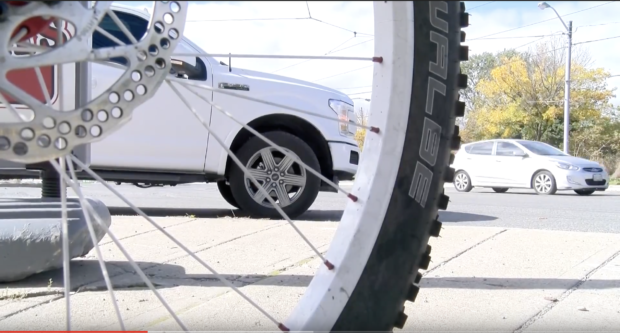

Vision Zero: Will Election Change Game Plan?
ElectionsEtobicokeNewsSpecials Oct 16, 2018 Lucas Laporta

By Lucas Laporta
Skedline.com
Vision Zero is the five-year plan Toronto City Council approved in 2017 to tackle traffic related fatalities across the city, including, but not limited to, cyclists. Presented by Mayor John Tory, the plan has a goal of reaching zero deaths in Toronto’s streets by 2021.
With the impending municipal election — in which wards have been cut by 20 seats — the scope of the plan might take a different shape than previously expected. The program is currently on course to be completed in three years, but if there’s a shake up in City Hall, those plans could change a little.
If elected Mayor on October 22, candidate Jennifer Keesmaat intends to bring a fresh perspective to city development, with Vision Zero playing an integral role.
“Mayor Tory has been focused on moving cars quickly. That’s what he’s focused on, and I would argue that is a very old model,” said Keesmaat. “The 21st-century model, the Vision Zero model, is about saying, ‘how do we make sure everybody is going to be safe in this city,’ in particular those most vulnerable users.”
That’s not to say the implementation of Vision Zero hasn’t been thought out by the current leadership at City Hall.
“There’s a lot of things that we’ve been working on, including our Vision Zero plan, which has to do with configuration changes to roads, education, and a lot of focus being put around school zones,” said Deputy Mayor Stephen Holyday.
“I definitely have found a high degree of support for city investment around school zones,” Holyday added.
Vision Zero has received $100 million in allocated funding since its launch. However, the program has yet to achieve its ambitious zero fatality goal. According to the Toronto Police Database, both 2016 and 2017 had greater than average traffic-related deaths, over half of which were pedestrians. As of October 8, there have been a grand total of 54 traffic fatalities in Toronto in 2018, according to data collected by CP24.
Keesmaat stresses the focus should be on safety over efficiency. An example she used of making the streets safer in Toronto is making the speed limit on all side-streets 30 kilometres per hour, allowing drivers to have the time to stop in an emergency while simultaneously increasing survivability in the case of an accident.
“Figuring out a way to ensure that all users are safe, but that the most vulnerable members, pedestrians and cyclists, the ones that are most exposed… planning for their safety: This is an essential part of my road safety plan,” said Keesmaat.
Keesmaat stresses the use of design to make a safer city. This would include the use of planter boxes, bollards, and paint to delineate who belongs where in the roads.
It is unclear how Keesmaat’s plan under Vision Zero would significantly differ from Mayor John Tory’s.
The current Vision Zero Road Safety Plan cites efforts such as, “Engineering safety measures, education safety measures, technological safety measures, and enforcement activities.” This includes targeting the design and operation of city streets, raising awareness of the issues faced on the road, and building upon the most effective enforcement resources.
The plan cites, “Pedestrians, school children, older adults, cyclists, motorcyclists, and aggressive driving and distraction” as their main areas of emphasis. Measures include new pedestrian crossing infrastructure, school safety programs, senior safety zones, and advanced green lights for cyclists.
